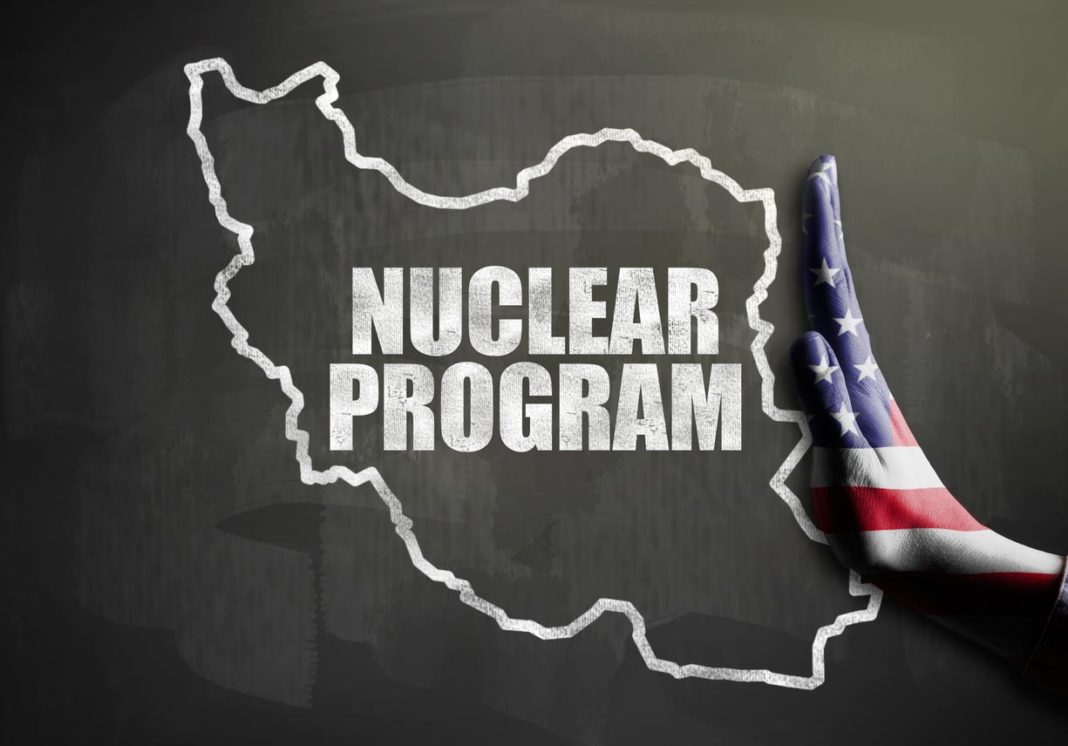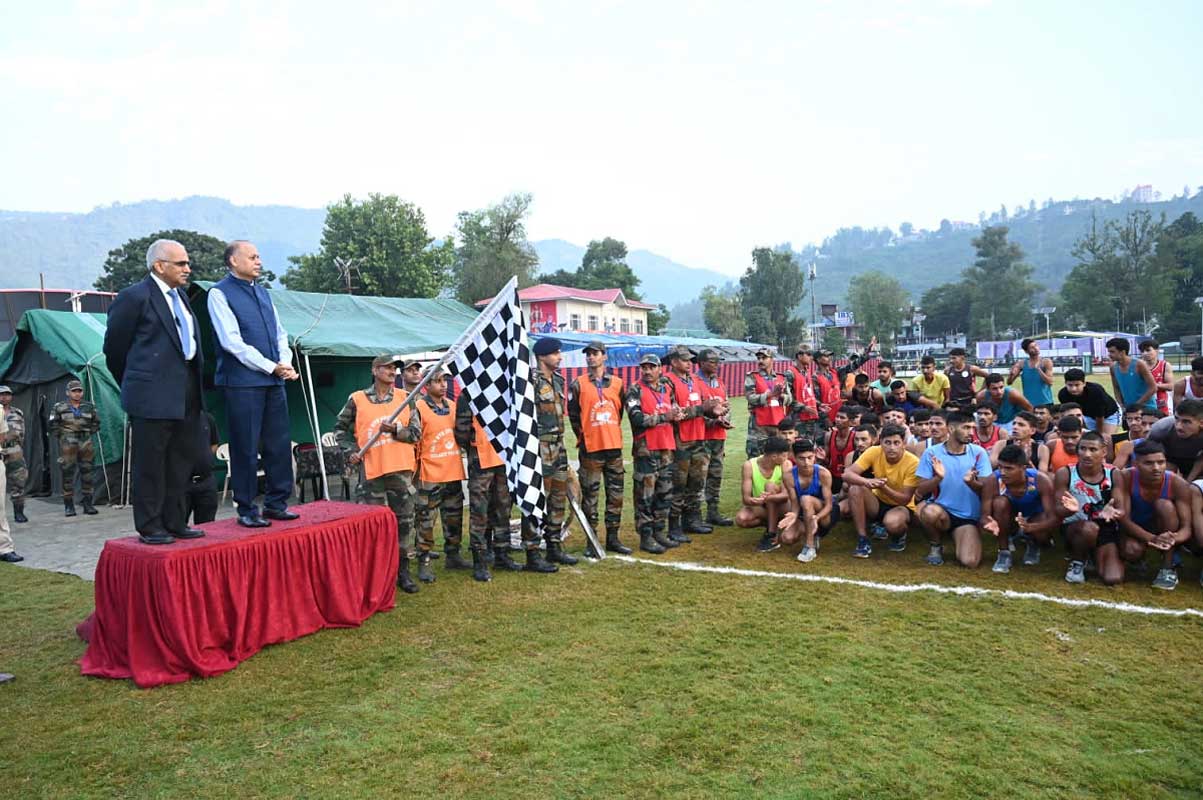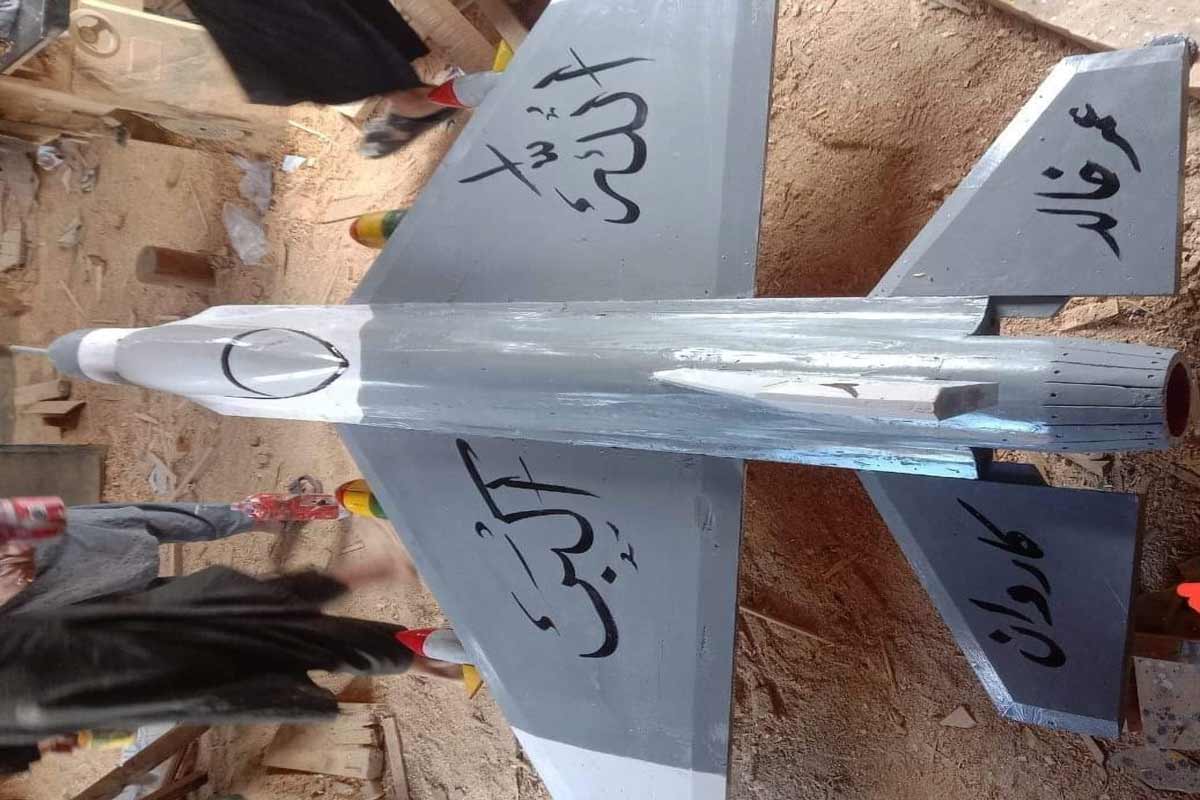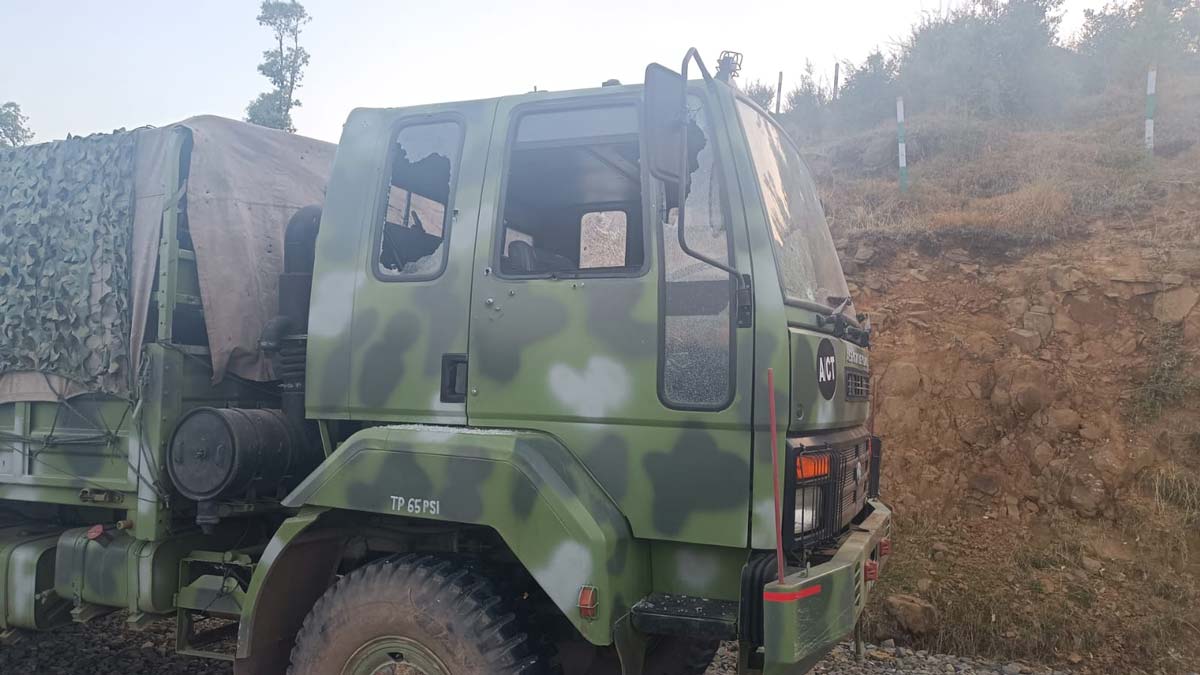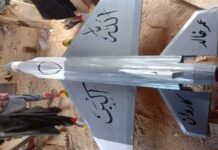Iran is deeply apprehensive of Israel and rightly so. That is the single-most important reason of their dream of becoming a nuclear power. On the other hand, America thinks that if Iran became a nuclear power, it would threaten Israel, America’s proxy in the Middle East.
Israel’s brazen atrocity of attacking Iran’s Osiraq nuclear reactor
Forty years ago in 1981, Israel had attacked and destroyed Iraq’s Osiraq nuclear research reactor, using F-15 and F-16 aircrafts supplied by the US to carry out the attack. It was given the code name Operation Opera. This research reactor was supplied by France in 1976. There was not an iota of evidence that it was or would be used for making nuclear weapons. Yet, in what would amount to international ‘gundaism’, they destroyed the reactor with 16 Mk-84 bombs of 2000 lbs each. Tom Moriarty says that Israel took that calculated risk because at that time both Iran and Iraq were embroiled in their eight-year long war (1980-88) and Iran could not afford to start a separate war with Israel.
This attack on Iran’s sovereignty was such a brazen; such an outrageous violation of international conventions that it left the whole world shocked. For rendering lip service, the United Nations Security Council in its Resolution 487 condemned the attack, nothing more. The American media of the era did display some independence—the Los Angeles Times called it ‘state-sponsored terrorism’ and the New York Times called it ‘an act of inexcusable and short-sighted aggression’.On its part, the USgovernment voted for the resolution and suspended the delivery of four F-16 aircraft to Israel, but blocked punitive action by the UN. The suspension on the delivery of the aircraft was lifted two months later anyway. Israel’s benefactors of long years could, of course, be not expected to betray their ‘ward’.
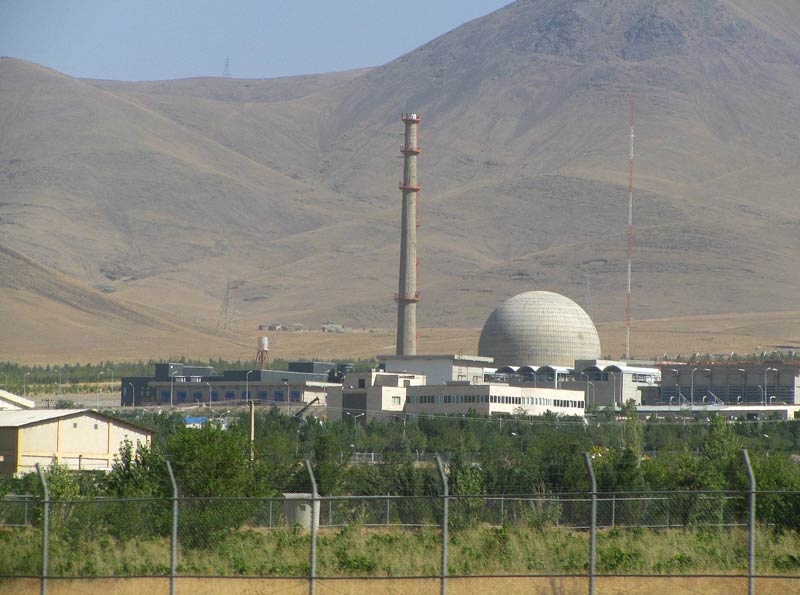
Iran violated again in 2010 by the Stuxnet virus
The second attack on Iran’s nuclear program took place in 2010. This time it was a combined effort of the Americans and the Israelis. However, no bombs were used. They used a computer virus instead. Why—because the US was clever enough not to get involved in a full-fledged war with Iran even as its hands were full in Afghanistan.
Even if the origin of the malicious cyber-attack could be traced to some place inside American or Israel, their respective governments could always claim that they have had no idea of it. They can very well say that some private citizen would have done it; maybe some visiting foreign citizen could have done it sitting in some cyber café; or the IP (Internet Protocol) address has been spoofed by the perpetrators. In other words, there is all the scope in the world for denying any role of the government in such a venture.
The virus Stuxnet attacked the centrifuges of the Iranian Fuel Enrichment Plant at Natanz. Centrifuges are sophisticated machines to enrich uranium. Now I will explain how a computer virus could damage centrifuges.
The centrifuge is essentially like a machine that would separate cream from milk. The only difference is that here it spins at an incredibly high speed of nearly 100,000 rpm whereas the cream separators would typically run at say 8,000 rpm.
The speed alone makes things very complex. The rotor blades have to be very light and yet very strong. Weak stuff would simply fly off! Then they have to be extremely finely balanced. As you know, your car’s wheels also need balancing even as they do not spin very fast. The 16 inch wheels of typical car spin at just 1040 rpm even if the car is doing 80 kmph. At speeds of a lakh or more rpm, slightest imbalance means disaster. You also require high-speed bearings, usually magnetic fields to reduce friction.
When you are dealing with such high speeds, simple electrical controls would not do. The Iranian centrifuges needed a Siemens Simatic Programmable Logic Controller (PLC), a digital computer used for automation of electromechanical processes, for controlling it.
The Stuxnet virus, introduced apparently through a pen drive, instructed the Siemens controller to cause the centrifuges to change its speed. The attacks were designed to first raise the speed and then lower it, with the intention of inducing excessive vibrations or distortions that would destroy the centrifuge.
It would have been very difficult to even suspect that the malfunction in the centrifuge was not due to any inherent mechanical or electrical problem—most people would have thought that it was just like any car engine or jet engine developing a snag. Who would have thought that the source of the problem lay in the PLC of the centrifuge? By the time they would have found the real source of the problem, the virus would have done its damage.
A basic violation of cyber security measures like not allowing pen drives inside a facility did them in.
In May 2011, the PBS program ‘Need To Know’ cited a statement by Gary Samore, White House Coordinator for Arms Control and Weapons of Mass Destruction, in which he said, “We’re glad the Iranians are having trouble with their centrifuge machine and that we—the US and its allies—are doing everything we can to make sure that we complicate matters for them”, offering “winking acknowledgement” of US involvement in Stuxnet. According to Daily Telegraph, a show reel that was played at a retirement party for the head of the Israel Defense Forces (IDF), Gabi Ashkenazi, included references to Stuxnet as one of his operational successes as the IDF chief of staff.
On November 29, 2010, Iranian president Mahmoud Ahmadinejad stated for the first time that a computer virus had caused problems with the controller handling the centrifuges at its Natanz facilities. According to the Institute for Science and International Security, a private group in Washington, Stuxnet attacked the Iranian uranium enrichment plant at Natanz and 984 machines, or about one fifth of all their centrifuges were reportedly damaged, setting back Iran by several years.
How Iran was forced into the nuclear agreement?
Iran had been reeling under the impact of the economic sanctions and eventually gave in to pressure. Iranian economy had relied heavily on oil exports for about 80 percent of its public revenue—the country was the world’s fourth largest producer of crude in 2011. The ban prohibited 27 members of the European Union from purchasing Iranian oil or insuring oil tankers that carry it. The United States had also imposed sanctions that punish most foreign countries that buy Iranian oil. That hit them hard.
Spiralling inflation was being felt by ordinary Iranians like never before. Iran’s Central Bank had reported inflation to be at 22.2 percent, although economists said the figure was grossly underestimated and it could actually be double that figure. In one instance, in one week alone, the price of chicken rose 30 percent and the price of vegetables almost 100 percent. Prices were unstable, budgets were being stretched thinner and thinner, and people were seeing the value of their savings quickly disappear. To make matters even worse, under President Mahmoud Ahmadinejad’s subsidy reform plan implemented in December 2010, the government had withdrawn subsidies on food staples, electricity, water, and gas, further pushing up prices and affecting companies and households alike. Compounding these struggles was mounting unemployment, soaring to an unofficial rate of 35 percent as factories and businesses were forced to lay off workers because they were unable to import vital goods and raw materials. In short, business had dried up, industry was collapsing and there was zero investment.
The Iran nuclear deal was a classic illustration of “Cuiustesticulous habeas, habeas cardia et cerebellum”, meaning “When you have them by the testicles, their hearts and minds will follow.” Iran was left with not too many options. By 2015, Iran’s nuclear program has cost $100 billion in lost oil revenues and lost foreign direct investment because of international sanctions ($500 billion, when including other opportunity costs).
A deal was eventually worked out in January 2016 following a preliminary framework agreement reached in 2015 with several world powers. It placed significant restrictions on Iran’s nuclear program in exchange for sanctions relief.
The agreement’s current status
President Trump withdrew the US from the deal in 2018, claiming it failed to curtail Iran’s missile program and regional influence. Iran began ignoring limitations on its nuclear program a year later.Washington and Tehran have both said they would return to the original deal but they disagree on the steps to get there.
What is Iran doing now?
They have started exceeding agreed-upon limits to its stockpile of low-enriched uranium in 2019, and begun enriching uranium to higher concentrations (though still far short of the purity required for weapons).It has also begun developing new centrifuges to accelerate uranium enrichment; resuming heavy water production at its Arak facility; and enriching uranium at Fordow. In January 2020, following the targeted killing of a top Iranian general, Qasem Soleimani by the Americans, Iran announced that it would no longer limit its uranium enrichment. In 2021, Iran announced new restrictions on the IAEA’s ability to inspect its facilities, and soon after ended its monitoring agreement with the agency completely.
Iran’s missiles that have unnerved the USA and Isarel
In contrast to their nuclear program, Iran’s missile program has gone on rather well. According to missilethreat.csis.org, Iran has the largest and most diverse missile arsenal in the Middle East, with thousands of ballistic and cruise missiles, some capable of striking as far as Israel and southeast Europe. For the past decade, Iran has invested significantly to improve these weapons’ precision and lethality. Iran’s achievements in missile development have been called “impressive” by IISS (International Institute for Strategic Studies).
There is a reason for doing so. Historically, Iran has been weak in conventional forces, with there being a gap of one generation or even more with respect to corresponding weapon systems of Israel. As such, Iran has practically no chance against Israel in a conventional war.Then what do they do? Undertaking indigenous research in every field and bringing it to the level of the state-of-the-art is difficult. They cannot purchase everything—it would be prohibitively expensive even if they were able to find some country outside the West willing to export to them. Hence they were left with no option but to lay emphasis on their missile capabilities.
More than one of their MRBMs (medium range ballistic missiles) with ranges up to 2000 km is operational while many others are in development. Then there are several SRBMs (short range ballistic missiles) with ranges up to 1000 km.
One of their operational missiles is Sejjil with a range of 2000 km. For this, Uzi Ruben, former director of Israel’s Ballistic Missile Defence Organization, has said that unlike other Iranian missiles, it bears no resemblance to any North Korean, Russian, Chinese or Pakistani missile technology. It therefore demonstrates a significant leap in Iran’s missile capabilities.
They have also made three types of cruise missiles—the Ra’ad anti-ship cruise missile (350 km); Ya-Ali land-attack cruise missile (700 km); and Soumar cruise missile (3000 km). Compare this with India where our only cruise missile Nirbhay has been under only limited deployment since 2020 and it has a range of 1,500 km only.
It would be interesting to see how Iran handles the guns versus butter debate — face starvation due to sanctions or go ahead and make a nuke anyway.
Also Read:
~ News4masses is now also on Google news
~ If you want to contribute an article / story, please get in touch at: news4masses[at]gmail[dot]com

